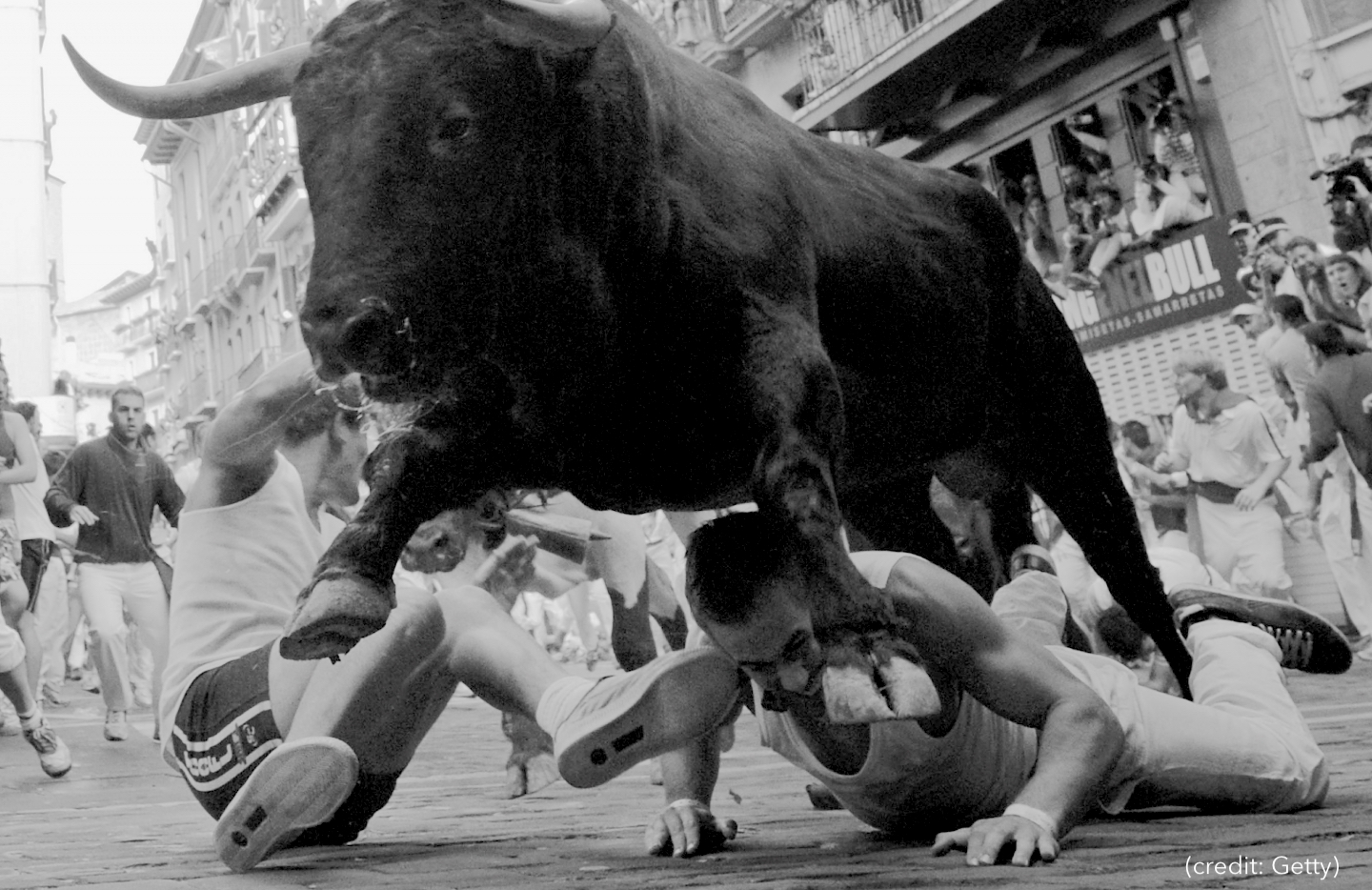by Jeffrey Kleintop, CFA®, Managing Director, Chief Global Investment Strategist, Charles Schwab & Co., Inc.
History shows us that the biggest risks in a typical year aren’t usually from out of left field (although that sometimes happens, as it did in 2020 with the COVID-19 outbreak). Rather, they are often hiding in plain sight. As goes one of my favorite quotes often attributed to Mark Twain: “It ain’t what you don’t know that gets you in trouble, it’s what you know for sure that just ain’t so.” Risk appears when there is a very high degree of confidence among market participants in a specific outcome that doesn’t pan out. So, by identifying the unexpected, here are our top five global risks for investors in 2022, in no particular order:
- Shortages turn into gluts
- Rate hikes slower than expected
- China goes from cracking down to propping up
- COVID waves may not resemble those of 2021
- Geopolitical surprises
In 2020, economies around the world were worse than anyone had forecast. But that wasn’t true in 2021: in most countries, recoveries were surprisingly rapid. That’s a useful reminder that the risk of surprises is not always to the downside. The balance of our unexpected risks may skew to the upside in 2022. Despite the strong year for stocks in 2021, markets have confidently priced in some negative trends gathering more momentum in 2022 that may help the market should these trends reverse.
Shortages turn into gluts
Supply shortages lifted inflation and slowed production throughout 2021 as strong demand outstripped supply, amplified by supply chain logjams. Although many expect these delays to linger through the next year, history shows us that shortages often rapidly lead to gluts. Should a supply glut emerge in 2022, it may lead to a fall in inflation with excess inventory prompting price cuts and posing risks to industries that have thrived on the shortage-fueled pricing boost.
The transition from shortages to gluts can be rapid.
- The pandemic created a shortage of masks and gloves in the first half of 2020. Top Glove, the world’s biggest maker of disposable gloves, saw its earnings prospects and stock price soar. Analysts’ earnings estimates jumped by 1400% and the stock price rose by over 400%. When demand began to return to normal, earnings forecasts plunged and the stock gave up all of its gains.
- We also saw this pattern unfold with home exercise equipment, as you can see in the chart below for Peloton Interactive, of one of the largest fitness companies in the world. After strong order growth in 2020 created shortages leading to both surging earnings and stock prices, demand quickly turned around leading to a round trip for both.
Home exercise equipment shortages turned around quickly
Source: Charles Schwab, Factset data as of 12/19/2021.
- This year we have seen a boom and bust swing in both coal and natural gas prices, which have both fallen by 38% after surging to 10 year highs in October.
After a year of supply shortages, we may be closer to the end of the supply chain problems than the beginning. Since markets tend to look six-to-twelve months ahead, they may soon begin to reflect the possibility that some shortages may have started to ease, and gluts may have started to form by the second half of next year. If key components become more available and finished goods output takes off, it may be welcome news for markets as a key driver of inflation pressure should ease and be accompanied by improving confidence in a slower tightening cycle from central banks. But it could also pose a risk to some industries that have thrived on the pricing boost from shortages. For more on this risk, please read my recent commentary: Will Shortages Lead To Gluts?
Rate hikes are slower than expected
Surging global inflation has led markets to anticipate three or more rate hikes next year by each of the Bank of England, Bank of Canada, Reserve Bank of Australia, and the U.S. Federal Reserve. Markets even reflect a rate hike by the European Central Bank (ECB). Should inflation pressures ease in 2022 as we expect, so may the expectations for the number of rate hikes and the corresponding tightening of financial conditions.
Inflation in the Eurozone surged to 4.9% in November, the highest in its 23-year history. In response, the market is pricing in high likelihood of an ECB rate hike by the end of 2022, which would end a decade long pattern of looser monetary policy. Energy contributed about two-thirds of the rise in Eurozone consumer price inflation in 2021, which may make it the most important factor to watch. We believe European inflation is likely to slide from a record high of around 5% at year-end 2021 to below the ECB's 2% target by the end of 2022. It could even drop to around 0% if energy market futures prices (including those for electricity and natural gas) for year-end 2022 become a reality.
Inflation fears may be peaking, along with concerns that central banks may stall the recovery by acting too quickly to raise rates in 2022.
China goes from cracking down to propping up
China’s economy slowed to a below average pace this year, due in part to regulatory changes. Over the past few quarters, Chinese authorities have been on a mission to restructure some industries including China’s property sector, in line with the idea that housing should be primarily a place to live and not an investment vehicle. China wants to drive private investment into other, globally competitive industries, not domestic housing.
Counteracting this economic drag is the implementation of stimulus following December’s Politburo meeting and Central Economic Work Conference (CEWC). The CEWC statement called for coordination of fiscal and monetary policy. These meetings confirmed that President Xi supports measures to ease policy and stabilize the housing sector. The People’s Bank of China cut bank reserve requirements by 50 bps on December 15 and cut the loan prime rate on December 20, the rate on which most new loans are based, as they attempt to put a floor under the growth rate.
China policy rates are well above other countries
Source: Charles Schwab, Bloomberg data as of 12/19/2021.
China’s monetary policy is shifting into easing mode, as the rest of the world shifts to tightening. With more stimulus on tap, the news flow on China may go from a focus on a crackdown on some industries in 2021 to propping up other industries in 2022.
COVID waves may not resemble those of 2021
Investors may have grown confident in how to trade the stock market’s leadership rotations this year. Each time waves of new daily global COVID-19 cases receded to 350,000 they reversed and began a two-month climb. These resurgences tended to be accompanied by the outperformance of defensive, lockdown-era leaders, like tech stocks. After the case count peaked, it would fall for two months, accompanied by the outperformance of economically sensitive, reopening beneficiaries, like energy stocks. You can see this recurring pattern in the chart below of global COVID-19 cases and the relative performance of the world’s tech and energy sectors.
Leadership rotation pattern breaking down?
Source: Charles Schwab, Bloomberg data as of 12/19/2021. Past performance is no guarantee of future results.
The repeating pattern suggests each wave lasts two months and has been driving investors to rotate consistently among these stocks. Yet, this winter’s omicron wave (and future waves) may pose a risk to investors, since they may not be unfolding in the same way in terms of COVID-19 cases or market leadership.
For this most recent cycle, tech stocks have failed to make new relative highs to energy since the news of omicron broke (circled in red). One reason might be that the valuations of the lockdown leaders are now very high relative to reopening beneficiaries, providing less scope for the latest wave of the sector rotation.
Geopolitical surprises
Geopolitical risk a regular part of investing. After the globe weathered the COVID crisis without conflict in 2021, the risks of conflict may be higher than expected by the markets in 2022.
- Hunger may drive social unrest- Food prices are near record highs, according to the United Nation's FAO Food Price Index, which tracks the monthly change in international prices for a basket of cereals, dairy, meat, sugars, and oil/fats. Past spikes in the price of food to current levels have helped to trigger periods of social unrest, like the Arab Spring in 2011. Popular uprisings are rarely localized events, often bringing in developed world powers in response to government collapse and risking broader instability.
Food prices in instability danger zone
Source: Charles Schwab, Bloomberg data as of 12/19/2021. The UN Food and Agriculture Organization (FAO) World Food Price Index is a measure of the monthly change in international prices of a basket of food commodities. It consists of the average of five commodity group price indices weighted by the average export shares of each of the groups over the 2014-2016 period.
- New leaders in Europe- Italy and France will see elections in early 2022, with the potential for euro-skeptics gaining power in these key economies. Any shift in appetites for the Euro could deprive the ECB of the political support needed to close any widening spreads in the European bond markets.
- Brexit flare up- Tensions over negotiations between the United Kingdom and European Union over the Northern Ireland Protocol (NIP), a compromise intended to keep an open land border and closed customs union, are escalating as 2022 gets underway. The EU said it was working on punitive trade measures if the U.K. suspended the NIP, potentially triggering a UK-EU trade war.
- Military conflict- A military conflict between China and Taiwan, from a blockade to an invasion, could draw in other world powers. An invasion of Ukraine by Russia could prompt world powers to impose new sanctions which may elevate energy cost inflation. Iran’s frustration over the lack of progress on lifting sanctions imposed over its nuclear program may even stir up regional conflict in the Middle East
The runner-up risk: stagflation
With so much speculation about stagflation, the stock market unfriendly combination of slow economic growth and high inflation, it’s hard to say it’s a risk being ignored by market participants. Yet, with valuations above average in many countries, markets aren’t priced for even a small risk of stagflation. In particular, a more contagious and deadly variant could act as a major economic drag and worsen the world’s supply problems, keeping workers out of labor markets and exacerbating logistics snarl-ups. The combined impact of these effects could result in a stagflation shock; leaving central banks with no good options for monetary stimulus and pushing markets into a downfall.
Be prepared
Whether or not these particular risks come to pass, a new year almost always brings surprises of one form or another. Having a well-balanced, diversified portfolio, whose risk profile is consistent with your goals, and being prepared with a plan in the event of an unexpected outcome are keys to successful investing.
Michelle Gibley, CFA®, Director of International Research, and Heather O’Leary, Senior Global Investment Research Analyst, contributed to this report.



















